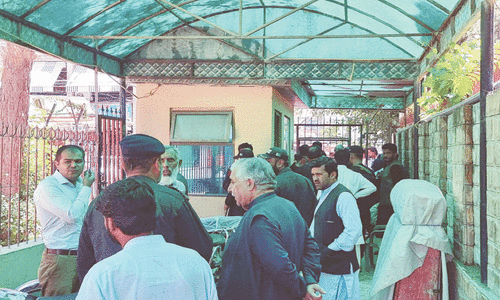ISLAMABAD, Dec 13: A continuous decline in the value of the rupee since June has caused a staggering increase of Rs403 billion in foreign debt of the country.
“The public and publicly guaranteed foreign debt, including IMF, has increased by Rs403,064 million as a result of depreciation of the rupee during the present government,” Finance Minister Ishaq Dar informed the National Assembly on Friday through a written reply to a question by Dr Nafisa Shah of the PPP.
This is the first time the government has come up with official figures showing how the free falling rupee had affected the country’s foreign debt.
In reply to a similar question by Sajid Ahmed of the MQM, the finance minister said the State Bank of Pakistan followed a flexible exchange rate regime where the value of the rupee against other currencies was determined in the foreign exchange market through the forces of supply and demand in both domestic and international markets.
Devaluation is a term used for fixed exchange regimes where the central bank or the government decides the value of exchange rate from time to time. “Thus the concept of devaluation does not arise,” Mr Dar said, adding that in the budget the government had planned substantial official foreign exchange inflows, including 3G licence fee, PTCL privatisation proceeds and loans from multilateral and bilateral sources.
He expressed the hope that timely and full realisation of the planned official financial inflows would help build up foreign exchange reserves and stabilise the exchange rate. The IMF programme has started and the first tranche of $544 million has already been received. The programme will not only result in building up foreign exchange reserves but also revive inflows from other financial institutions like the World Bank, ADB, etc.
Another important information Mr Dar had shared with the National Assembly on Thursday was about printing of new currency notes. “From July 1 to Nov 29, the State Bank got banknotes of Rs280.7 billion printed by the Pakistan Security Printing Corporation,” he said in reply to a question by Syed Asif Huanain of the MQM.
The opposition has been criticising the government for uncontrolled, back-breaking double-digit inflation rate and for printing new currency notes.
On Friday, the house was informed that the last PPP government had consumed Rs8,136 billion of loans provided by local banks and international donors. Mr Dar said the former government had taken Rs6,234 billion from local banks, Rs1,256 billion from public and publicly-guaranteed institutions and Rs645 billion from the International Monetary Fund.
“The government financed its fiscal deficit through domestic and foreign loans. Fiscal deficit has been, on an average, seven per cent of GDP over the past five years which resulted in increase in total public debt,” the minister said in his written reply to a question by Belum Hasnain of the PPP.
In reply to a question of another PPP lawmaker Shazia Mari about the chances of coming out of loan circle of foreign donors, Mr Dar said foreign loans would be required until inflows were higher than outflows.
“The main objective of the foreign borrowing is to supplement domestic and external resources required to accelerate the pace of economic development and make positive contribution towards developing the country’s infrastructure base. Loans from the IMF are mostly obtained for balance of payment support. These loans reflect in foreign exchange reserves of the country,” the minister explained.
He said the government was committed to reducing the financing gap as ultimately it would help reduce dependence on loans. He said revenue expansion through tax reforms focusing on broadening income tax base, austerity measures through reducing other than obligatory, expenditures, reducing untargeted subsidies, reforming public sector corporations, resolving the energy crisis and attracting non-debt creating flows were the government’s initiatives to reduce fiscal deficit and improve balance of payments.











































